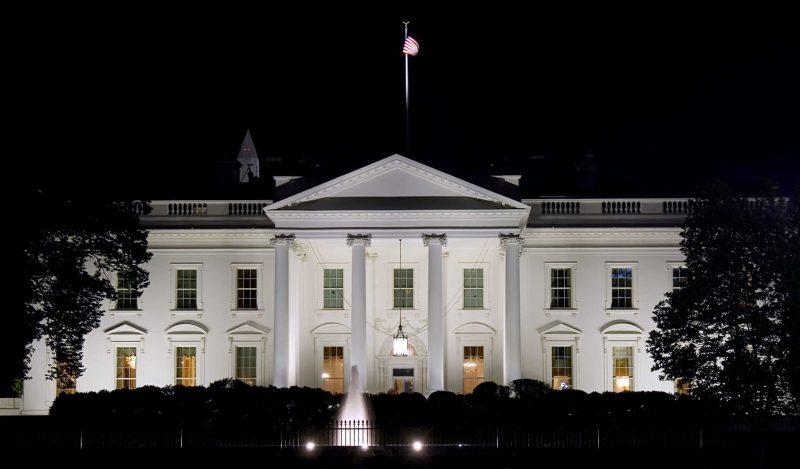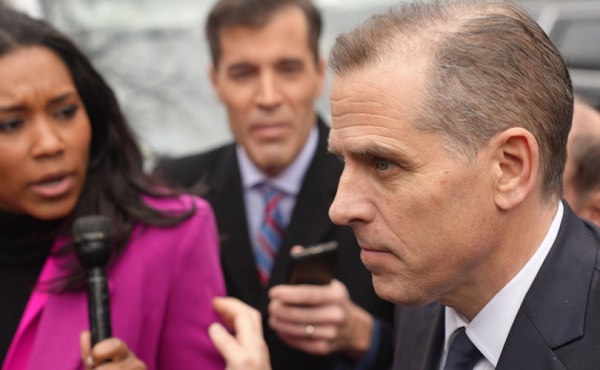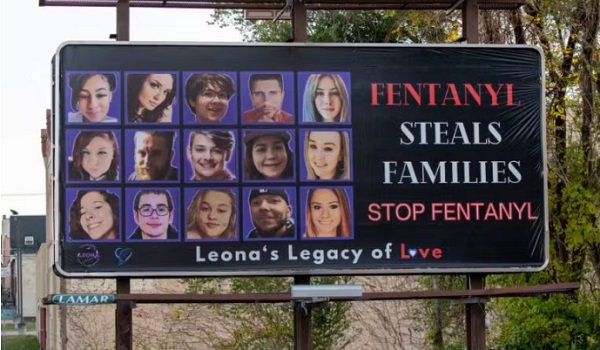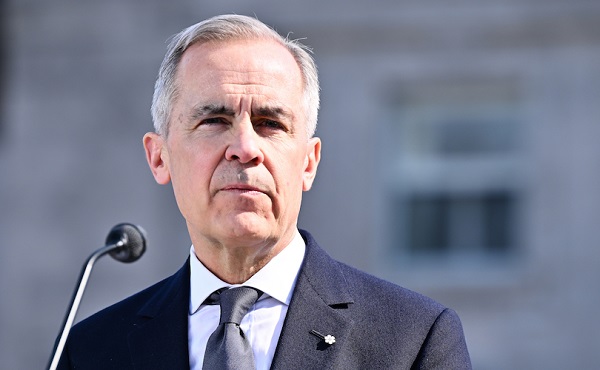Brownstone Institute
Vaccine Mandates 3 Years Ago This Week

From the Frontier Centre for Public Policy
By Jeffrey A. Tucker of the Brownstone Institute
The people who I was meeting found a restaurant that would allow us in even without showing proof of vaccination. We came in the back way and sat at a table near the back to avoid possible detection from the police who were going venue to venue to enforce the rules.
Three years ago on Sept. 9, 2021, the Biden administration released an executive order on “Requiring Coronavirus Disease 2019 Vaccination for Federal Employees.” It pertained to all federal employees including the military and contractors too. It was just the beginning. The agency OSHA issued an edict that imposed mandates on all businesses with more than 100 employees, plus health care and transportation workers.
Every Human Resources in corporate America got the memo and started the implementation, cutting many people out of a job. At first it did not matter as much for many because people were still working at home. But as people started coming back to the office, the mandates got tighter and tighter, and the mask mandates alongside them. Sometimes there were exemptions for people who agreed to be constantly tested but even those started to dissipate over time.
The frenzy for mandates got extreme by year’s end. The city of New York shut down all its public accommodations to the unvaccinated. You could not go to a restaurant, even fast food, without proof of vaccination. You could not have a beer in a bar. You could not go to the library or theater. Concert tickets required them and so did comedy clubs. The idea was that this would help business because it would make people feel safe. The opposite happened as the unvaccinated ended up avoiding the city entirely.
With New York City as the example, other cities got on board. The idea of medical segregation spread to Boston, Chicago, Washington, D.C., New Orleans, and Seattle. Those who declined to get the untested shot, either because they feared side effects or simply believed that they did not need them, were limited in their travel options. They were the great excluded.
These mandates disproportionately harmed minority populations. The lowest uptake of the vaccines was among the black community, which distrusted them based on a long and egregious history of medical experimentation. Major media took it upon themselves to claim that the refuseniks were disproportionately living in red states, failing to mention that within these states, it was the blue voters who refused them the most.
Many people in these cities found it easiest to forget a piece of paper since the venues did not really care anyway, and only vaguely looked as a formality. We still have no idea just how many of these fake IDs were issued. Was it 20 percent, 50 percent, or more? We’ll probably never know but the Biden administration did in fact prosecute people for fake IDs, so doing so came with some risks. And one would never upload a fake card to any digital media source for purposes of travel or otherwise.
Finally the legal challenges started taking hold. On Jan. 13, 2022, the Supreme Court ruled against OSHA’s mandate on private business and contractors but kept in place the mandate on health-care workers who were more likely than others to have natural immunity from exposure. In any case, the businesses that had already imposed them were unphased by this decision and were slow to let them go, simply because so many had already made enormous sacrifices to comply.
The devastation on business was already done. Politico reported in October 2021 that “Defense and industry officials are sounding warning bells that weapons programs crucial to America’s defense could face delays if enough skilled workers walk-off the job instead of following President Joe Biden’s executive order for all federal employees and contractors to take the Covid vaccine by Dec. 8.” Also affected of course was aviation which experienced a pilot shortage and labor shortage generally. Flight delays and cancellations became a normal event, and it continues to this day.
At some point during the closure of New York City, I needed to be in town to meet a possible donor for a nonprofit. The people who I was meeting found a restaurant that would allow us in even without showing proof of vaccination. We came in the back way and sat at a table near the back to avoid possible detection from the police who were going venue to venue to enforce the rules. Many restaurants were forced to decide between compliance and profitability.
All of this came following a year in which closures had deeply harmed the bottom line. When they were opened, it was only at half-capacity and many had to build outdoor sections because it was widely believed at the time that the virus lived indoors but not in outdoor areas. The mask mandates also applied to all servers while the customers could sit maskless while eating. None of it made any sense but it all happened anyway.
While all of this virus chasing was going on, complete with the segregation and mask enforcement, basic functions of government like protecting the border were sidelined. This led to a migrant crisis in major cities and towns all over the country. That is still going on today, as there is no willingness on the part of those in charge to deport the millions who took advantage of the COVID-19 chaos to hop over the border (with no checks on their vaccine status).
As we look back, it seems almost hard to believe that any of this happened but it did. And then to top it off, it had become increasingly clear even from the spring of 2021 that the vaccine was not protective against infection nor transmission. It had long been known that healthy adults and children were not at medically significant risk from the virus but even among those who were, the shot did not provide the kinds of protection traditionally associated with vaccines.
None of this information deterred those who pushed the mandates. People living abroad, even family members of U.S. citizens, were simply not allowed into the country without proof of vaccination. That mandate survived for years. Even today, the shot is required for obtaining citizenship, which means that the mandates still survive in some form.
This mad rush to force the shot on everyone stems from a long history of belief that vaccines can only control a disease if everyone gets them. That was true of Smallpox and perhaps polio and measles. But that perception entirely hinges on the sterilizing quality of the vaccines themselves, which these new shots certainly did not have. Therefore there was no basis for the mandates at all. If ever there was living proof of a madness pushed toward the irrational use of force this was it.
We still have no firm numbers on the number of people who lost their jobs or gave them up and otherwise experienced professional displacement as a result of these mandates. But certainly the numbers are in the millions. As injury reports began to pour in, it became clear that this was at least in terms of reporting the most dangerous pharmaceutical product called a vaccine issued in our lifetimes. But the companies themselves had been granted full protection from liability from harm, which is to say that there was nothing that the victims could do.
This is the third anniversary of the executive order that unleashed this whole divisive and destructive campaign. A painful anniversary it is. For many people, and for a whole generation, this was the equivalent of the conscription mandates in the Vietnam War, a move against the civilian population that fundamentally disrupted the social contract and shattered the trust we once had in official institutions. It will never be forgotten by those who lived through it.
And yet even now, we wonder what lessons have been learned, if any.
Jeffrey A. Tucker is Founder and President of the Brownstone Institute and the author of many thousands of articles in the scholarly and popular press and ten books in 5 languages, most recently Liberty or Lockdown.
Jeffrey A.Tucker’s interview with David Leis on Leaders on the Frontier can be seen here.
Brownstone Institute
If the President in the White House can’t make changes, who’s in charge?

From the Brownstone Institute
By
Who Controls the Administrative State?
President Trump on March 20, 2025, ordered the following: “The Secretary of Education shall, to the maximum extent appropriate and permitted by law, take all necessary steps to facilitate the closure of the Department of Education.”
That is interesting language: to “take all necessary steps to facilitate the closure” is not the same as closing it. And what is “permitted by law” is precisely what is in dispute.
It is meant to feel like abolition, and the media reported it as such, but it is not even close. This is not Trump’s fault. The supposed authoritarian has his hands tied in many directions, even over agencies he supposedly controls, the actions of which he must ultimately bear responsibility.
The Department of Education is an executive agency, created by Congress in 1979. Trump wants it gone forever. So do his voters. Can he do that? No but can he destaff the place and scatter its functions? No one knows for sure. Who decides? Presumably the highest court, eventually.
How this is decided – whether the president is actually in charge or really just a symbolic figure like the King of Sweden – affects not just this one destructive agency but hundreds more. Indeed, the fate of the whole of freedom and functioning of constitutional republics may depend on the answer.
All burning questions of politics today turn on who or what is in charge of the administrative state. No one knows the answer and this is for a reason. The main functioning of the modern state falls to a beast that does not exist in the Constitution.
The public mind has never had great love for bureaucracies. Consistent with Max Weber’s worry, they have put society in an impenetrable “iron cage” built of bloodless rationalism, needling edicts, corporatist corruption, and never-ending empire-building checked by neither budgetary restraint nor plebiscite.
Today’s full consciousness of the authority and ubiquity of the administrative state is rather new. The term itself is a mouthful and doesn’t come close to describing the breadth and depth of the problem, including its root systems and retail branches. The new awareness is that neither the people nor their elected representatives are really in charge of the regime under which we live, which betrays the whole political promise of the Enlightenment.
This dawning awareness is probably 100 years late. The machinery of what is popularly known as the “deep state” – I’ve argued there are deep, middle, and shallow layers – has been growing in the US since the inception of the civil service in 1883 and thoroughly entrenched over two world wars and countless crises at home and abroad.
The edifice of compulsion and control is indescribably huge. No one can agree precisely on how many agencies there are or how many people work for them, much less how many institutions and individuals work on contract for them, either directly or indirectly. And that is just the public face; the subterranean branch is far more elusive.
The revolt against them all came with the Covid controls, when everyone was surrounded on all sides by forces outside our purview and about which the politicians knew not much at all. Then those same institutional forces appear to be involved in overturning the rule of a very popular politician whom they tried to stop from gaining a second term.
The combination of this series of outrages – what Jefferson in his Declaration called “a long train of abuses and usurpations, pursuing invariably the same Object” – has led to a torrent of awareness. This has translated into political action.
A distinguishing mark of Trump’s second term has been an optically concerted effort, at least initially, to take control of and then curb administrative state power, more so than any executive in living memory. At every step in these efforts, there has been some barrier, even many on all sides.
There are at least 100 legal challenges making their way through courts. District judges are striking down Trump’s ability to fire workers, redirect funding, curb responsibilities, and otherwise change the way they do business.
Even the signature early achievement of DOGE – the shuttering of USAID – has been stopped by a judge with an attempt to reverse it. A judge has even dared tell the Trump administration who it can and cannot hire at USAID.
Not a day goes by when the New York Times does not manufacture some maudlin defense of the put-upon minions of the tax-funded managerial class. In this worldview, the agencies are always right, whereas any elected or appointed person seeking to rein them in or terminate them is attacking the public interest.
After all, as it turns out, legacy media and the administrative state have worked together for at least a century to cobble together what was conventionally called “the news.” Where would the NYT or the whole legacy media otherwise be?
So ferocious has been the pushback against even the paltry successes and often cosmetic reforms of MAGA/MAHA/DOGE that vigilantes have engaged in terrorism against Teslas and their owners. Not even returning astronauts from being “lost in space” has redeemed Elon Musk from the wrath of the ruling class. Hating him and his companies is the “new thing” for NPCs, on a long list that began with masks, shots, supporting Ukraine, and surgical rights for gender dysphoria.
What is really at stake, more so than any issue in American life (and this applies to states around the world) – far more than any ideological battles over left and right, red and blue, or race and class – is the status, power, and security of the administrative state itself and all its works.
We claim to support democracy yet all the while, empires of command-and-control have arisen among us. The victims have only one mechanism available to fight back: the vote. Can that work? We do not yet know. This question will likely be decided by the highest court.
All of which is awkward. It is impossible to get around this US government organizational chart. All but a handful of agencies live under the category of the executive branch. Article 2, Section 1, says: “The executive Power shall be vested in a President of the United States of America.”

Does the president control the whole of the executive branch in a meaningful way? One would think so. It’s impossible to understand how it could be otherwise. The chief executive is…the chief executive. He is held responsible for what these agencies do – we certainly blasted away at the Trump administration in the first term for everything that happened under his watch. In that case, and if the buck really does stop at the Oval Office desk, the president must have some modicum of control beyond the ability to tag a marionette to get the best parking spot at the agency.
What is the alternative to presidential oversight and management of the agencies listed in this branch of government? They run themselves? That claim means nothing in practice.
For an agency to be deemed “independent” turns out to mean codependency with the industries regulated, subsidized, penalized, or otherwise impacted by its operations. HUD does housing development, FDA does pharmaceuticals, DOA does farming, DOL does unions, DOE does oil and turbines, DOD does tanks and bombs, FAA does airlines, and so on It goes forever.
That’s what “independence” means in practice: total acquiescence to industrial cartels, trade groups, and behind-the-scenes systems of payola, blackmail, and graft, while the powerless among the people live with the results. This much we have learned and cannot unlearn.
That is precisely the problem that cries out for a solution. The solution of elections seems reasonable only if the people we elected actually have the authority over the thing they seek to reform.
There are criticisms of the idea of executive control of executive agencies, which is really nothing other than the system the Founders established.
First, conceding more power to the president raises fears that he will behave like a dictator, a fear that is legitimate. Partisan supporters of Trump won’t be happy when the precedent is cited to reverse Trump’s political priorities and the agencies turn on red-state voters in revenge.
That problem is solved by dismantling agency power itself, which, interestingly, is mostly what Trump’s executive orders have sought to achieve and which the courts and media have worked to stop.
Second, one worries about the return of the “spoils system,” the supposedly corrupt system by which the president hands out favors to friends in the form of emoluments, a practice the establishment of the civil service was supposed to stop.
In reality, the new system of the early 20th century fixed nothing but only added another layer, a permanent ruling class to participate more fully in a new type of spoils system that operated now under the cloak of science and efficiency.
Honestly, can we really compare the petty thievery of Tammany Hall to the global depredations of USAID?
Third, it is said that presidential control of agencies threatens to erode checks and balances. The obvious response is the organizational chart above. That happened long ago as Congress created and funded agency after agency from the Wilson to the Biden administration, all under executive control.
Congress perhaps wanted the administrative state to be an unannounced and unaccountable fourth branch, but nothing in the founding documents created or imagined such a thing.
If you are worried about being dominated and destroyed by a ravenous beast, the best approach is not to adopt one, feed it to adulthood, train it to attack and eat people, and then unleash it.
The Covid years taught us to fear the power of the agencies and those who control them not just nationally but globally. The question now is two-fold: what can be done about it and how to get from here to there?
Trump’s executive order on the Department of Education illustrates the point precisely. His administration is so uncertain of what it does and can control, even of agencies that are wholly executive agencies, listed clearly under the heading of executive agencies, that it has to dodge and weave practical and legal barriers and land mines, even in its own supposed executive pronouncements, even to urge what might amount to be minor reforms.
Whoever is in charge of such a system, it is clearly not the people.
Brownstone Institute
The New Enthusiasm for Slaughter

From the Brownstone Institute
By
What War Means
My mother once told me how my father still woke up screaming in the night years after I was born, decades after the Second World War (WWII) ended. I had not known – probably like most children of those who fought. For him, it was visions of his friends going down in burning aircraft – other bombers of his squadron off north Australia – and to be helpless, watching, as they burnt and fell. Few born after that war could really appreciate what their fathers, and mothers, went through.
Early in the movie Saving Private Ryan, there is an extended D-Day scene of the front doors of the landing craft opening on the Normandy beaches, and all those inside being torn apart by bullets. It happens to one landing craft after another. Bankers, teachers, students, and farmers being ripped in pieces and their guts spilling out whilst they, still alive, call for help that cannot come. That is what happens when a machine gun opens up through the open door of a landing craft, or an armored personnel carrier, of a group sent to secure a tree line.
It is what a lot of politicians are calling for now.
People with shares in the arms industry become a little richer every time one of those shells is fired and has to be replaced. They gain financially, and often politically, from bodies being ripped open. This is what we call war. It is increasingly popular as a political strategy, though generally for others and the children of others.
Of course, the effects of war go beyond the dismembering and lonely death of many of those fighting. Massacres of civilians and rape of women can become common, as brutality enables humans to be seen as unwanted objects. If all this sounds abstract, apply it to your loved ones and think what that would mean.
I believe there can be just wars, and this is not a discussion about the evil of war, or who is right or wrong in current wars. Just a recognition that war is something worth avoiding, despite its apparent popularity amongst many leaders and our media.
The EU Reverses Its Focus
When the Brexit vote determined that Britain would leave the European Union (EU), I, like many, despaired. We should learn from history, and the EU’s existence had coincided with the longest period of peace between Western European States in well over 2,000 years.
Leaving the EU seemed to be risking this success. Surely, it is better to work together, to talk and cooperate with old enemies, in a constructive way? The media, and the political left, center, and much of the right seemed at that time, all of nine years ago, to agree. Or so the story went.
We now face a new reality as the EU leadership scrambles to justify continuing a war. Not only continuing, but they had been staunchly refusing to even countenance discussion on ending the killing. It has taken a new regime from across the ocean, a subject of European mockery, to do that.
In Europe, and in parts of American politics, something is going on that is very different from the question of whether current wars are just or unjust. It is an apparent belief that advocacy for continued war is virtuous. Talking to leaders of an opposing country in a war that is killing Europeans by the tens of thousands has been seen as traitorous. Those proposing to view the issues from both sides are somehow “far right.”
The EU, once intended as an instrument to end war, now has a European rearmament strategy. The irony seems lost on both its leaders and its media. Arguments such as “peace through strength” are pathetic when accompanied by censorship, propaganda, and a refusal to talk.
As US Vice-President JD Vance recently asked European leaders, what values are they actually defending?
Europe’s Need for Outside Help
A lack of experience of war does not seem sufficient to explain the current enthusiasm to continue them. Architects of WWII in Europe had certainly experienced the carnage of the First World War. Apart from the financial incentives that human slaughter can bring, there are also political ideologies that enable the mass death of others to be turned into an abstract and even positive idea.
Those dying must be seen to be from a different class, of different intelligence, or otherwise justifiable fodder to feed the cause of the Rules-Based Order or whatever other slogan can distinguish an ‘us’ from a ‘them’…While the current incarnation seems more of a class thing than a geographical or nationalistic one, European history is ripe with variations of both.
Europe appears to be back where it used to be, the aristocracy burning the serfs when not visiting each other’s clubs. Shallow thinking has the day, and the media have adapted themselves accordingly. Democracy means ensuring that only the right people get into power.
Dismembered European corpses and terrorized children are just part of maintaining this ideological purity. War is acceptable once more. Let’s hope such leaders and ideologies can be sidelined by those beyond Europe who are willing to give peace a chance.
There is no virtue in the promotion of mass death. Europe, with its leadership, will benefit from outside help and basic education. It would benefit even further from leadership that values the lives of its people.
-

 Catherine Herridge2 days ago
Catherine Herridge2 days agoFBI imposed Hunter Biden laptop ‘gag order’ after employee accidentally confirmed authenticity: report
-

 Crime2 days ago
Crime2 days agoFirst Good Battlefield News From Trump’s Global War on Fentanyl
-

 2025 Federal Election2 days ago
2025 Federal Election2 days agoDon’t let the Liberals fool you on electric cars
-

 International2 days ago
International2 days agoTrump’s ‘Golden Dome’ defense shield must be built now, Lt. Gen. warns
-

 2025 Federal Election2 days ago
2025 Federal Election2 days agoLiberals Replace Candidate Embroiled in Election Interference Scandal with Board Member of School Flagged in Canada’s Election Interference Inquiry
-

 Courageous Discourse1 day ago
Courageous Discourse1 day agoEurope Had 127,350 Cases of Measles in 2024
-

 2025 Federal Election2 days ago
2025 Federal Election2 days agoPierre Poilievre Declares War on Red Tape and Liberal Decay in Osoyoos
-

 Podcasts16 hours ago
Podcasts16 hours agoTrump’s Tariffs: The US, Canada, and the rest of the world









